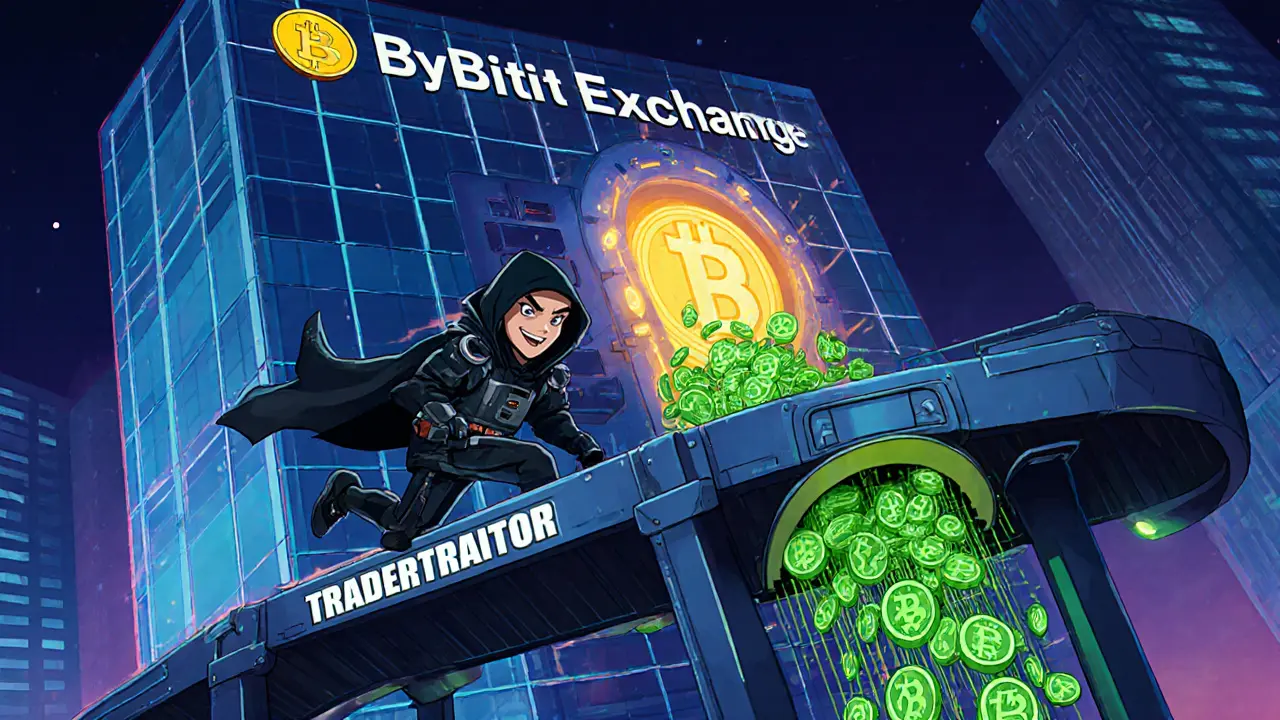Crypto Theft Impact Calculator
Estimated Annual Impact
In 2025 the world watched a massive shift in how a rogue nation funds its weapons program - North Korea crypto hack operations exploded, and the regime even announced a domestic crypto ban while still running state‑sponsored attacks abroad. This article breaks down what happened, why it matters for anyone holding digital assets, and what governments and exchanges are doing to stop the bleeding.
Why North Korea Turned to Cryptocurrency
North Korea is a totalitarian state that relies on international sanctions evasion to keep its nuclear and missile programs afloat. With traditional revenue streams choked by United Nations resolutions, the regime turned to digital currencies that can be moved across borders without a bank.
Two core goals drive the strategy: generate hard cash for weapons development and conceal the money trail from sanctions watchdogs. The country’s cyber‑units, often called the “Lazarus Group,” have become a full‑time revenue‑generation arm, stealing, laundering, and converting crypto assets at an industrial scale.
The ByBit Breach - A Game‑Changing Attack
On February 21, 2025 the FBI announced the largest crypto theft ever: the ByBit hack involved the theft of roughly $1.5 billion in virtual assets, accounting for 69% of all crypto losses reported that year.
What made the breach shocking was the compromise of a so‑called “cold” wallet - hardware kept offline to prevent hacking. Analysts believe the attackers either infiltrated the supply chain of the wallet manufacturer or used a sophisticated insider‑threat method that bypassed air‑gap protections. The operation was later labeled “TraderTraitor” by the FBI, and the stolen coins were quickly shuffled across thousands of blockchain addresses.
TraderTraitor’s Playbook
The post‑breach laundering phase reveals a three‑pronged playbook:
- Convert stolen tokens to Bitcoin and Ethereum, using mixers and chain‑hopping services to obscure the origin.
- Move the crypto through a network of “money‑laundering hubs” in third countries - most notably Cambodia’s loosely regulated gambling and fintech sectors.
- Cash out via stablecoins issued by front companies that cannot be frozen, then route the fiat through shell banks to North Korea’s procurement channels.
Key actors identified in blockchain analyses include the TraderTraitor group, which operates a set of Ethereum addresses flagged by the FBI as directly linked to DPR‑K operators.

Money‑Laundering Networks: The Cambodian Connection
In May 2025 the U.S. Financial Crimes Enforcement Network (FinCEN) designated the Huione Group - a Cambodia‑based conglomerate - as a primary money‑laundering concern.
FinCEN’s investigation uncovered $37.6 million in crypto that passed through Huione subsidiaries such as Huione Guarantee and Huione Crypto. These entities supplied the technical infrastructure for scams, issued un‑backed stablecoins, and acted as “bridge” firms that let North Korean actors convert illicit crypto into seemingly legitimate assets.
State‑Sponsored IT Workers - The Hidden Revenue Stream
Beyond outright theft, the DPRK runs a massive program of deploying IT workers abroad. United Nations estimates suggest these workers generate up to $600 million per year, often paid in crypto to avoid detection.
Workers hide behind false identities, posing as developers from China, Russia, or African nations. They use VPNs and remote‑management tools to conceal their location while performing freelance gigs, building malicious code, or providing “legitimate” software services that embed back‑doors for later exploitation.

U.S. Government Response - Sanctions, Indictments, and Rewards
In the wake of the ByBit breach, multiple U.S. agencies coordinated a crackdown:
- The Treasury’s Office of Foreign Assets Control (OFAC) sanctioned Korea Sobaeksu Trading Company and three individuals - Kim Se Un, Jo Kyong Hun, and Myong Chol Min - for facilitating crypto‑related revenue streams.
- The Department of Justice unsealed indictments against seven DPRK nationals for violating the International Emergency Economic Powers Act.
- The State Department announced rewards of $500,000 to $7 million for information leading to arrests under the Transnational Organized Crime Rewards Program.
Senators Elizabeth Warren and Jack Reed pressed the administration for a stronger, coordinated effort, highlighting the link between crypto theft and the regime’s weapons budget.
Industry Reaction - What Exchanges Can Do Today
The FBI has been urging cryptocurrency exchanges, DeFi platforms, and blockchain analytics firms to block addresses associated with TraderTraitor. Practical steps include:
- Implement real‑time monitoring of high‑risk wallets flagged by law‑enforcement notices.
- Adopt stricter KYC/AML controls for users who wish to withdraw large sums of crypto to fiat.
- Invest in behavioral analytics that can detect insider‑threat patterns similar to the ByBit breach.
Security experts warn that without a significant increase in spending on defenses, exchanges will remain attractive targets for North Korean operators who constantly refine their tactics.
Looking Ahead - Can Sanctions Keep Up?
The scale of 2025’s crypto theft shows that traditional sanctions are losing their bite. Even as the DPRK announced a domestic crypto ban, its cyber‑units continue to siphon digital assets from abroad. A sustainable solution will likely require:
- International cooperation to shut down laundering hubs in third countries.
- Standardized blockchain forensic protocols shared across law‑enforcement agencies.
- Public‑private partnerships that fund cutting‑edge security research for exchanges.
Until these measures mature, anyone holding crypto should treat the threat as a real, ongoing risk - especially if they operate on platforms that lack robust cold‑storage practices.
What made the ByBit hack different from previous crypto thefts?
The attack compromised a cold‑wallet storage system that was thought to be offline and therefore immune to remote attacks. This indicates the DPRK used insider access or supply‑chain manipulation, raising the bar for future threats.
How does the Huione Group facilitate North Korean crypto laundering?
Huione provides technical infrastructure for scams, issues un‑backed stablecoins that can’t be frozen, and runs payment processors that convert illicit crypto into fiat, acting as a bridge between the blockchain and the real economy.
What can individual crypto users do to protect themselves?
Use exchanges that employ multi‑factor authentication, store large holdings in hardware wallets that are never connected to the internet, and stay informed about flagged addresses reported by law‑enforcement agencies.
Why did North Korea announce a crypto ban domestically?
The regime wants to prevent its own citizens from trading crypto that could be traced back to them, while still exporting state‑controlled hacking services and laundering proceeds abroad.
Will international sanctions ever stop North Korean crypto theft?
Sanctions alone are insufficient; a coordinated mix of technical defenses, financial tracking, and diplomatic pressure on laundering hubs is needed to blunt the DPRK’s revenue stream.
Brody Dixon
October 25, 2025 AT 09:27I've seen a lot of people get nervous when stories about North Korean crypto theft surface, but remember that staying calm and following basic security hygiene goes a long way. Keep your private keys offline, use strong 2FA, and avoid sharing personal details on public forums. If you already hold assets on an exchange, make sure they have cold‑storage policies and regular audits. Small steps like these can protect you from being an easy target.
Mike Kimberly
October 29, 2025 AT 10:40North Korea’s pivot to cryptocurrency in 2025 can be understood as a logical response to the tightening of conventional financial sanctions, a phenomenon that has been documented extensively in the literature on illicit state financing. By exploiting the pseudonymous nature of blockchain transactions, the regime has been able to sidestep traditional monitoring mechanisms, thereby creating a parallel revenue stream that directly funds its nuclear and missile programs. The ByBit breach, which resulted in the loss of approximately $1.5 billion, represents not merely an isolated criminal act but a strategic escalation designed to demonstrate the technical sophistication of the Lazarus Group. Analysts have highlighted that the infiltration of a cold‑wallet system suggests a compromise of the supply chain, a tactic that considerably raises the difficulty of attributing blame to any single actor. Moreover, the subsequent laundering operations, often referred to as the “TraderTraitor” playbook, illustrate a multi‑layered approach that includes chain‑hopping, the use of mixers, and the conversion of illicit proceeds into stablecoins that are less susceptible to seizure. The involvement of third‑country hubs such as the Huione Group in Cambodia further underscores the transnational nature of these operations and the challenges faced by regulators in jurisdictions with limited AML oversight. In addition to direct theft, the DPRK’s expansive network of overseas IT workers, who are remunerated in crypto, adds a persistent and less conspicuous source of income that evades detection. The United States response, encompassing OFAC sanctions, DOJ indictments, and reward programs, reflects an understanding that a purely punitive approach is insufficient without coordinated international cooperation. While sanctions against entities like Korea Sobaeksu Trading Company signal a willingness to target facilitators, the effectiveness of these measures hinges on the ability of global financial institutions to identify and block the flagged addresses in real time. Exchanges, therefore, must invest in robust blockchain analytics, implement stringent KYC/AML protocols, and adopt behavioral monitoring tools capable of detecting insider‑threat patterns similar to those observed in the ByBit incident. Failure to do so will leave the ecosystem vulnerable to further exploitation, as evidenced by the recurring nature of North Korean cyber‑operations. From a policy perspective, the development of standardized forensic protocols and public‑private partnerships is essential to create a resilient defense against such state‑sponsored threats. Ultimately, the convergence of sophisticated hacking techniques, strategic use of crypto‑mixers, and exploitation of lax regulatory environments illustrates why traditional sanctions alone cannot keep pace with the evolving threat landscape. Stakeholders are therefore urged to view this issue not as a singular event but as an ongoing risk that demands sustained vigilance and collaborative action across borders. In sum, the 2025 crypto theft saga serves as a stark reminder that the intersection of geopolitics and digital assets will continue to shape security considerations for years to come.
angela sastre
November 2, 2025 AT 11:54For anyone looking to shore up their crypto defenses, the first step is to move large holdings to a hardware wallet that never touches an internet‑connected device. Pair that with a unique, offline seed phrase and you’ll drastically reduce the attack surface.
Patrick Rocillo
November 6, 2025 AT 13:07💡 Great point! I also lock my wallet in a fire‑proof safe and write the recovery seed on a metal plate-just in case the house burns down. 🌟 Keeps the peace of mind level up!
Aniket Sable
November 10, 2025 AT 14:20hey folks, dont forget that even small crypto stashes can get stolen if you leave them on exchanges with weak security. try using a ledger or trezor and keep your passcodes super secret. stay safe out there!
Santosh harnaval
November 14, 2025 AT 15:34Indeed, hardware wallets are the most reliable option for protecting assets.